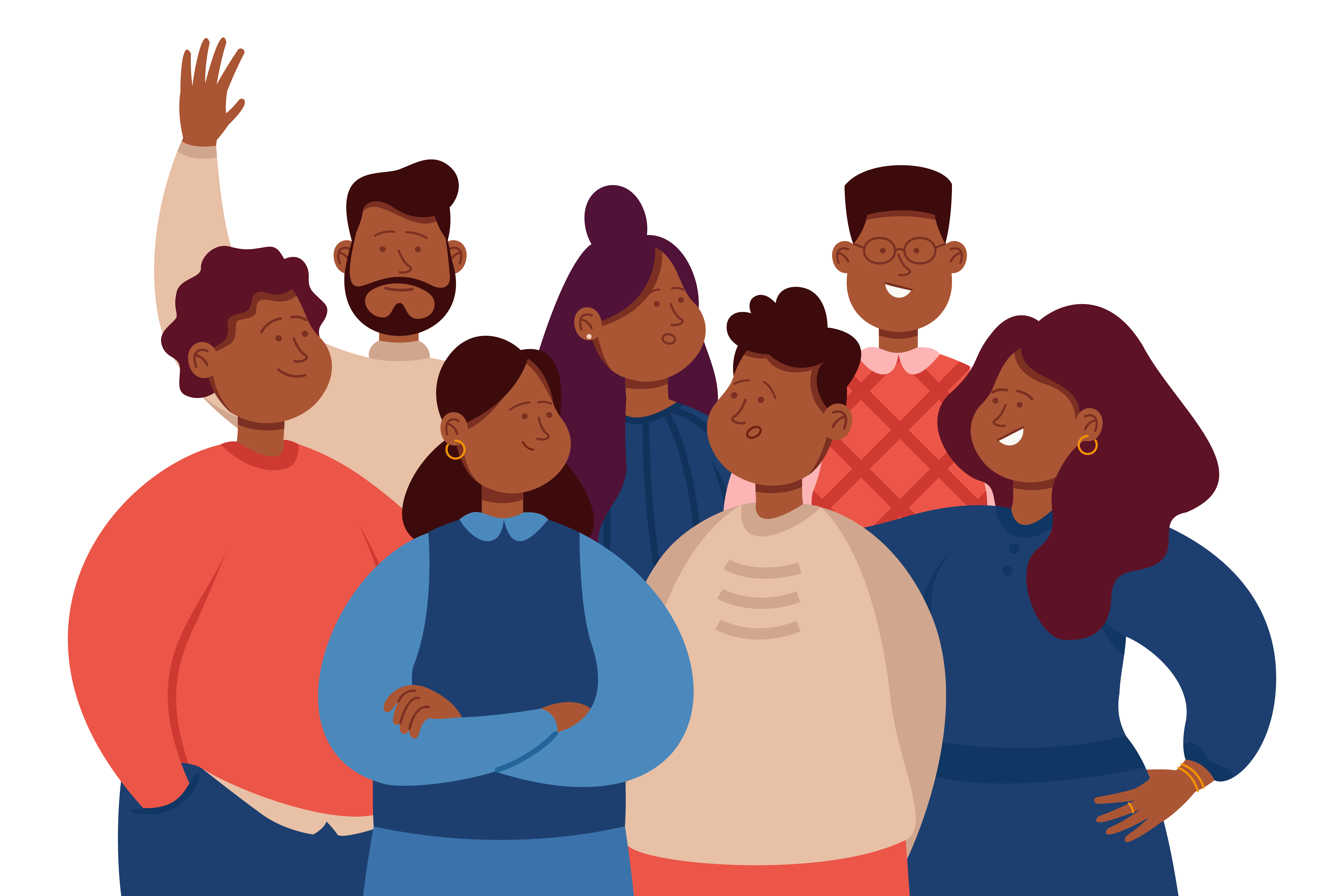How to Turn The Platform into Community-driven
Community is often seen as a universal remedy for digital success. Community is the answer, they say, but what’s the answer to how to build one? Now it’s here. Follow seven strategic steps, along with several technical actions, to create it.
Recently, I came across a curious post on Reddit: one of the users shared that they had launched a game, a nice and bug-free one. People who tried it after the launch found it quite interesting, but retention remained extremely low, despite the game being free. So, he decided to go through all his favourite gamers’ platforms to find out what he should do and what he missed. He went through Reddit, Facebook, and various Google services, and he found the only answer: community.

Your game can be stunning, but people won’t come back if they don’t have a community there. The gaming industry relies on a community of players; the players need a community to which they can belong. Without this, players won’t be satisfied, and the game won’t remain alive.
Thus, is it just about gaming? Obviously, the gaming industry cannot survive without community, but what about other industries and domains? Of course not—otherwise these billions of hobby and interest groups wouldn’t exist, nor would Instagram accounts and specific apps for film, gardening, knitting, Muay Thai, Irish gin, and kitchen décor lovers. So, if you plan to launch or develop an app or website which is content-driven or purpose-driven, make it community-driven as well. It is not an add-on, but a necessity for your platform’s future.
Still, there is a list of steps you should take before running the community to ensure that it will work as well as you expect.
1st step: Purpose and Value
We told you that community is necessary; many people told you the same, but you still need to define the particular goal for creating it.
Possible goals depend on your app, of course, but even generics can vary. Decide what you want to get from the community and what their aim and behaviour will be: do you plan to grow metrics? or do you want to make your app community-driven? or does your content imply co-consuming? or do you plan to gather soulmates and make the app or website the place where they will be sure they can find each other? When you have a purpose, define the values it will uphold—for your platform and for its participants. A sense of belonging, or metrics, or both? If metrics, which ones? If it’s a sense of belonging, what is the basis for it—hobby, support, shared leisure, common goal, shared ideas, expertise?
2nd step: Identify Your Target Audience
If your app is created for specific people, this will be a more or less clear step. If the app has various users, you should find out whether all of them will be part of the community. If yes, do all of them have the same role? Or do you plan to differentiate them with tiers and levels of engagement or expertise? Imagine the perfect community on your platform, and describe a portrait of its participants. Its future members may turn out different, but you need to pick a starting point and strategy, which is impossible without an idea of the audience. When you have this idea, identify what this potential audience seeks and where they currently gather. Explore them—how they communicate, what they like. Community is not something started from scratch; your future audience is already communicating somewhere. Conduct reconnaissance and gather as much information as possible.

3rd step: Where is the place?
In the previous step, you identified where your potential audience, members of your future community, gather and what they use for communication and exchanging ideas: Reddit? Instagram? WhatsApp groups? Comment sections of some specialised media? The game’s chat? Pinterest? Outdated forums? What else do they use? Boosty and Pinterest? TV channels? Digital achievement stores? Do they have offline meetings? You have gathered all this information, including the digital map, or perhaps not just the digital one
Now, look at your app and website. You need to find out not only how to incorporate all this experience into your platform, but why this experience will be better, brighter, and more convenient than their previous one, which was full of variety and, most importantly, was habitual, familiar, and part of their everyday routine.
Empower your community, but set boundaries. Finding the right balance between user empowerment and content moderation is crucial for community-driven platforms.
Be willing to change course when necessary. Despite fears it would “break” the site, he implemented the first content policy. Sometimes, you must risk short-term backlash to ensure long-term viability.
Maintain your core values through growth. Despite pressure to change, Reddit has maintained core principles like user anonymity and allowing diverse content (with restrictions). (Reddit's founders advice)
These steps are in a specific order for a reason: now you already have values and a mission. Let’s imagine that your platform is an app for gardeners and plant owners. Currently, they gather on forums, Instagram, and Pinterest, and none of these platforms are actually connected to gardening. So, you can meet their needs: not only provide an exciting and useful tool to grow plants, but also connect the community to it.
Right now, they search for how to water a monstera in winter on Google, then on forums, then post pics of their stunning monstera on Instagram, save pretty pots and jars on Pinterest, and exchange funny jokes about monstera fans in their WhatsApp groups. It is not convenient—it’s time-consuming. These people love growing plants, not digital surfing. So, just incorporate all this experience into your app: they won’t waste their time, won’t be distracted, and they will do everything they need about their monstera in one place, your app.
4th step: Encourage Participation
Users often feel stressed when they see an empty space, whether digital or analogue. That’s relevant for an empty diner or a new social media platform. You want to belong to the community but don’t want to sit alone waiting for somebody. If you didn’t know, you’ll be pleased to hear this: the owners and founders of Reddit were communicating there themselves for two years before they saw real activity and real communities. Don’t be shy, show by your own example how to communicate there. Some use bots for this, but recent studies show that people are interested in bots’ help, not for replacing human interaction. Communicate with users, communicate with each other, and spend as much time in your own community as you expect from your users.
5th step: Foster a Sense of Belonging
When you gather people, they need to feel part of the community and understand why it’s a great place to be.
One of our partners, quite a huge sports platform, didn’t even have a chat or comment section, and we added chats to different sports events. Initially, people didn’t understand why they should text there, but after several months they realised: they spend time here, they communicate here, they build connections and trust, and finally this sense of belonging led them to the platform and to the chats every morning to check if there was something new. It's funny that the integration initially included just text chats, but still, people wanted to communicate with soulmates who lived in the same information field but had no connections with their real lives beyond sports and this particular platform. That gave them both freedom and a sense of belonging at the same time. So, kinda perfect relationships.
"The word ‘community’ has warm, fuzzy connotations. But a siloed, individualistic culture also makes it harder to establish and maintain community; creating a shared identity and spirit of reciprocity takes effort and is not always comfortable" (Guardian).
6th step: Support and Safety
Okay, people have got used to communicating in your app, they quite like it, but there is another crucial thing: safety. All communities, whether small or large, sooner or later raise the question of policy and moderation. When you claim freedom of speech, it does not prevent you from the necessity of protecting your users from spam, scams, and rudeness. And regardless of the fact that moderation is a problem you’ll need to solve sooner or later, we definitely advise you to answer these questions sooner, even before your community has the opportunity to be created. Because if your first users encounter anything unpleasant on entering your app for the first time, there’s a high probability they’ll never come back. Also, explain your rules and guidelines to users; don’t hide them. People should be aware of the boundaries from the outset.
7th step: Measure Effects
If the community is a part of your platform, it should be measured. And here we come back to the first step: what is crucial for you? Because the metrics and result estimation depend on your initial goals. Still, there are two main metrics you can track regardless of the goal: 30-day retention and engagement. How many people come back to your community? Do they come back once, or do they do it regularly? What do they do—are they engaged or just passive visitors? Measure these two metrics and follow the changes. There is quite a high probability that these two metrics will influence and interconnect with any of your other key metrics.
Technical steps you need to take to start communities on your app or website
Form UX: place entry points and create space for communication.
Find and architect the main usage scenarios.
Design the future moderation system: what will it include? How will your guidelines be enforced?
Decide the level of anonymity for users: will they have photos, nicknames, and what type of information and content will they be able to share and exchange?
Integrate chats, comment sections, and audio or video features.
Add engagement tools and achievements to boost participation.
Get in touch
If you want to integrate community-based live chats or other social tools into your website or app, book a call with our team. We will help you find the best solution for your engagement strategy.
Boost your platform with
Watchers embedded tools for ultimate engagement
